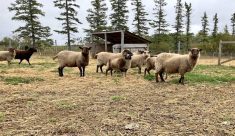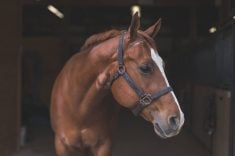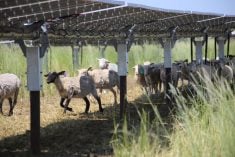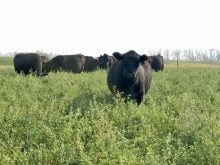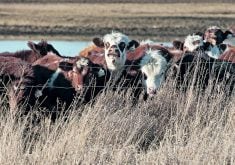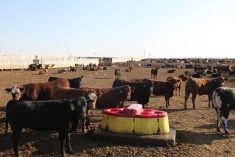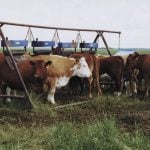“If a boar has greater genetic merit,
then every pig born from that boar
will have that,”
“The pig is one of the few mammalian species where we can’t actually do that… it means that if you want to take some outstanding genetics from Canada and move them to China or Russia, it’s done on 747s.”
GEORGE FOXCROFT
SWINE REPODUCTIVE
PHYSIOLOGIST, U OF ALBERTA
Read Also
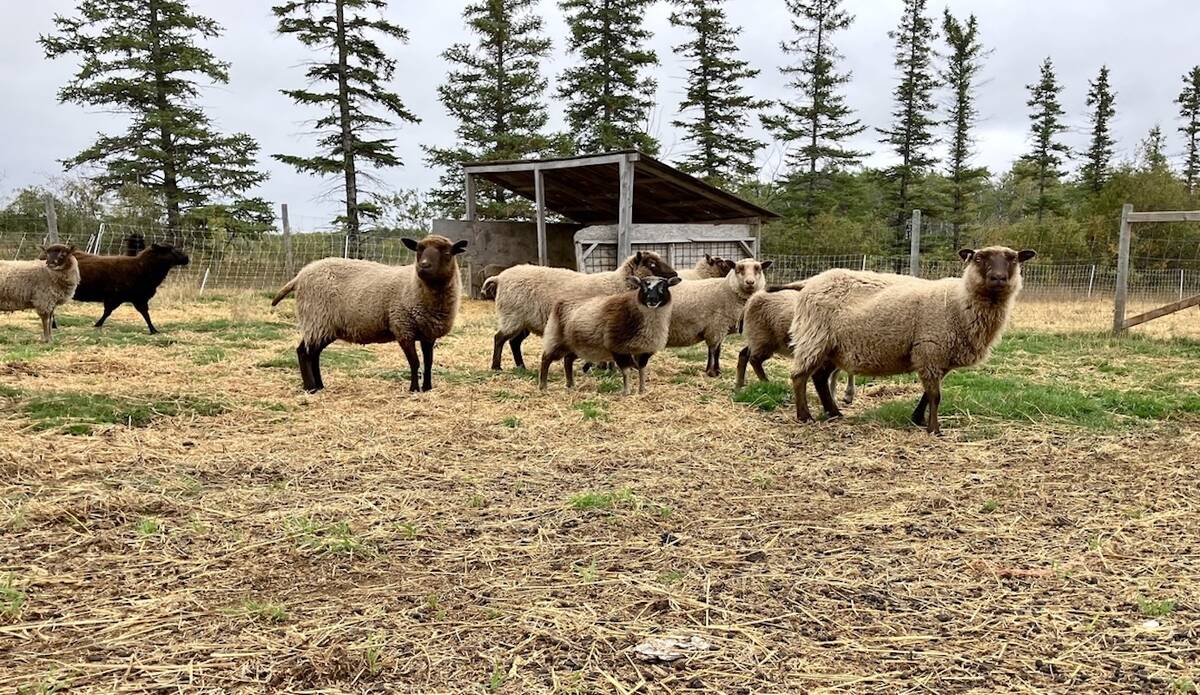
Mosquito-borne virus could be devastating to sheep breeding operations
Cache Valley virus, a mosquito-borne disease that infects small ruminants, could be a devastating hit to small operations.
Efficient pig reproduction isn’t as simple as letting nature take its course. The process of making piglets has numerous complications, some of which have to do with the animal’s unique reproductive system, says George Foxcroft, a swine reproductive physiologist and professor at the University of Alberta.
Foxcroft is currently involved with EmbryoGENE, part of a strategic research network. The University of Alberta runs the swine component of the network and is partnered with Laval University in Quebec, which runs the cattle component. Technology in this program allows scientists to read the genes expressed in an animal’s tissue, which enables them to manipulate early embryos and to develop embryos in vitro – outside the animal in a test tube or petri dish.
Scientists have never been able to develop pig embryos in vitro, as pig embryos just break apart. Another complication is that pig embryos and sperm cannot be frozen, so to transfer semen, you have to transfer the whole pig.
“The pig is one of the few mammalian species where we can’t actually do that, which is a real pain because it means that if you want to take some outstanding genetics from Canada and move them to China or Russia, it’s done on 747s,” says Foxcroft.
One of Foxcroft’s main areas of interest is examining sow fertility to find out how the fertility of sows has changed over time. The genetic quality of the female, including factors such as her nutritional state, can affect the quality of the female’s offspring through a process known as imprinting.
Today’s pigs have been selected to be good milk producers and have large litters.
“You usually find young females, first-time mothers, will lose weight in lactation. The problem for breeding management is that these pigs are bred to come back into heat incredibly quickly after their piglets are weaned,” he said. Foxcroft and several other scientists are conducting research to see if the quality of the piglets from the next litter will be affected by this rapid transition.
The research focus on sows has mainly been on litter quality. Breeding sows have been selected on litter size, which is affected by the number of eggs ovulated by the sow, the ability of sperm to fertilize those eggs and how many of those fertilized eggs survive to term.
“You can’t select for ovulation rate,” Foxcroft says. “We have no genetic marker or way to figure out what the early survival is.”
Several factors interact to influence the number of piglets born and research teams are working to determine the effects on birth weights and number of piglets produced.
Testing gilts
The University of Alberta’s research team has also researched gilt development. “We’re well known for trying to demonstrate that the link between actual rate of growth and rate of sexual maturity is not absolute,” says Foxcroft. The only way to test a female’s sexual maturity is to stick her in front of a boar and see if she reaches estrus, he says.
Researchers at the University of Alberta worked with colleagues in Chile to design the Boar Estrus Stimulation Area (BEAR) system, which puts a large number of females in front of a group of boars. The gilts then interact with numerous boars through a system of gates and pens and this helps show which females have reached estrus. The system is now used all over North America.
Gilts also have to be at the right weight in order to breed and should be bred during their second estrus, Foxcroft says. Members from the research team developed the “200, 300, 400” rule, which designates recommended weights for gilts to be stimulated by boars, bred and for them to farrow. Ideally, gilts should be about 200 pounds when stimulated by a boar, bred at 300 pounds, and 400 pounds at farrowing.
Foxcroft is a big supporter of research on single-boar insemination and isolating excellent specimens that can be classed as superior boars. Using superior boars can add a dollar value to every pig born, he said.
“If a boar has greater genetic merit, than every pig born from that boar will have that,” he said.
The hog industry uses pooled semen for artificial insemination, which involves semen collection from several boars. This used to be an advantage to industry, but Foxcroft argues that it has now made it more difficult to isolate and identify superior boars.
“We’re arguing that this has become a limiting technology. It was an enabling technology but now in terms of genetic progress and efficiency in industry, it’s becoming a limiting technology,” he said. He believes in researching single-boar and single-sow mating to find the best genetic material and would like to do further research in this area.



